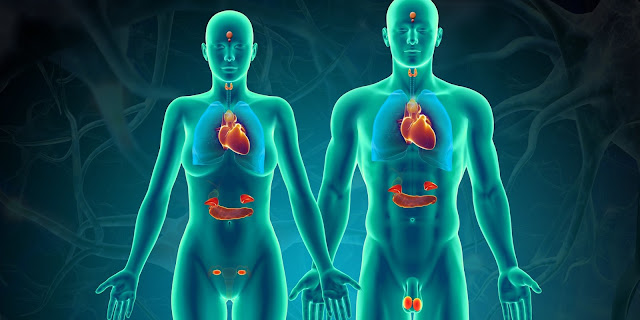Emergency Room Triage: A System to Prioritize Patient Care
Within minutes of arrival, patients arriving at hospital emergency rooms are quickly assessed and categorized based on the severity and urgency of their conditions. This process of prioritizing patients is known as emergency room triage. Through triage, medical staff are able to quickly identify those in most need of immediate care and focus resources on stabilization and treatment of life-threatening illnesses and injuries first.
The Triage Process
All patients entering An
Emergency Room are assessed at triage where a nurse will gather basic
information like patient name, age, and chief complaint. Vital signs like
pulse, blood pressure, temperature and respiration rate will be recorded to get
an initial picture of the patient's condition. Besides recording objective
medical findings, the nurse will inquire about symptoms, how long they have
been present, any previous medical history that may be relevant and what
brought the patient to seek emergency care.
Based on this initial evaluation, patients are assigned a triage category which
indicates the order they should be seen in relative to other patients in the
waiting room. The five levels of triage categorization from most to least
urgent are:
Immediate/Resuscitation: These patients require immediate lifesaving
intervention and are seen first. Conditions requiring immediate intervention
may include cardiac or respiratory arrest, uncontrolled bleeding or airway
obstruction.
Emergent: Patients with potentially life-threatening injuries or illnesses that
require evaluation within 15-30 minutes like chest pain, shortness of breath or
major trauma fall under this category.
Urgent: Conditions requiring treatment within an hour such as minor fractures,
severe abdominal pain, uncontrolled vomiting or diarrhea are considered urgent.
Less Urgent: Examples are minor illnesses or injuries that require examination
and treatment within 2 hours like minor infections, sprains, lacerations or eye
irritation.
Non-Urgent: Patients with conditions like minor illnesses, non-severe injuries
or follow up visits for chronic issues that do not require emergency care are
seen last and treated within 4 hours or scheduled for a later visit.
Triage Goals and Challenges
The goals of triage are to save lives by quickly identifying and prioritizing
care based on medical need. It aims to direct emergency resources efficiently.
However, there are also many challenges to triage including determining
severity accurately with limited information, handling surge volumes and making
difficult prioritization calls when resources are constrained. Communication
barriers add complexity when collecting histories from patients from diverse
backgrounds.
Misdiagnosis and errors are also risks that triage nurses must be vigilant
against. Constant reassessment is required as conditions can change rapidly in
emergencies. Overcrowding poses another difficulty when patients end up waiting
longer than their assigned category due lack of beds or providers. Despite
challenges, with experience and assessment skills, triage personnel play a
vital role in emergency medicine.
Importance of Triage Accuracy
Proper triage has significant implications for patient outcomes. Researchers
have found that the most accurate predictor of hospital admission, intensive
care needs and mortality is the initial severity grading at triage.
Underestimating acuity risks missed diagnoses or treatment delays that can
impact recoveries. On the other hand, over-triaging wastes limited emergency
resources on less urgently ill patients who may have alternatives for
non-emergency care.
Maintaining accuracy requires ongoing education and review of triage decisions.
At hospitals, triage performance data is regularly audited through methods like
chart reviews to check for level assignment correctness, timeliness standards
being met and appropriate reassessments done. Areas requiring improvement are
identified and addressed. Simulation-based training also helps identify gaps
and stay sharp on varied medical presentations likely to present at triage.
With quality assurance measures, triage nurses can optimize decision making
under pressure circumstances in the emergency setting.
Future of Triage
Technology promises to enhance triage accuracy and efficiency going forward.
Select hospitals now use electronic programs at triage entry that analyze chief
complaints and vital signs along with algorithms to suggest initial triage
categories. Artificial intelligence applications are also being developed and
tested that can incorporate broader variables to augment the skill and judgment
of nurses. Telehealth is seeing use for some patients by paramedics in the
field through video links to emergency physicians for consultations prior to
transport.
While technology adjuncts hold promise, human factors remain vital to triage
success. No program can replace the experience and instincts of a well-trained
nurse. The future likely involves continued hybrid models augmented by digital
assistance tools not meant to replace but support frontline clinical decision
making. As patient volumes continue trending upwards in emergency rooms
nationwide, innovations that help streamline processes while maintaining human
touchpoints will be important to optimize emergency patient flow and reduce wait
times. Emergency triage continues to be a dynamic practice area anticipated to
thrive on advancements aiding communication, clinical support and resource
deployment for those urgently seeking medical attention.
Conclusion
In summary, emergency triage serves the important function of classifying
patients by acuity during their initial emergency room presentation. By
systematically categorizing medical emergencies, triage nurses are able to
direct treatment resources most effectively to save the most lives. With
ongoing quality initiatives and integration of technology accessories, triage
practices are set to evolve while respecting the core asset of human clinical
decision making under pressure-filled emergency circumstances. As a pivotal
first step in the emergency care pathway, triage processes optimally
coordinated can help emergency rooms realize their goal of providing
compassionate and timely care to all arriving patients based on medical need.
Get more insights on Emergency
Room Triage




Comments
Post a Comment